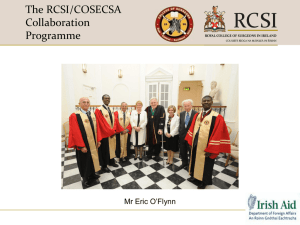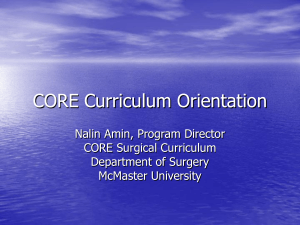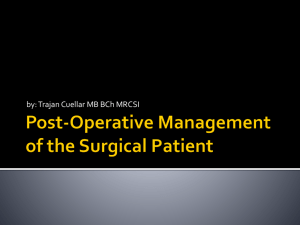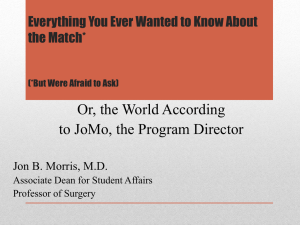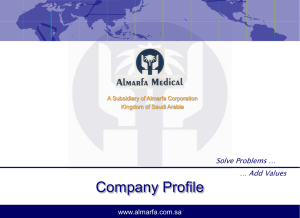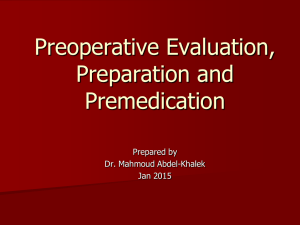pptx - Research
advertisement
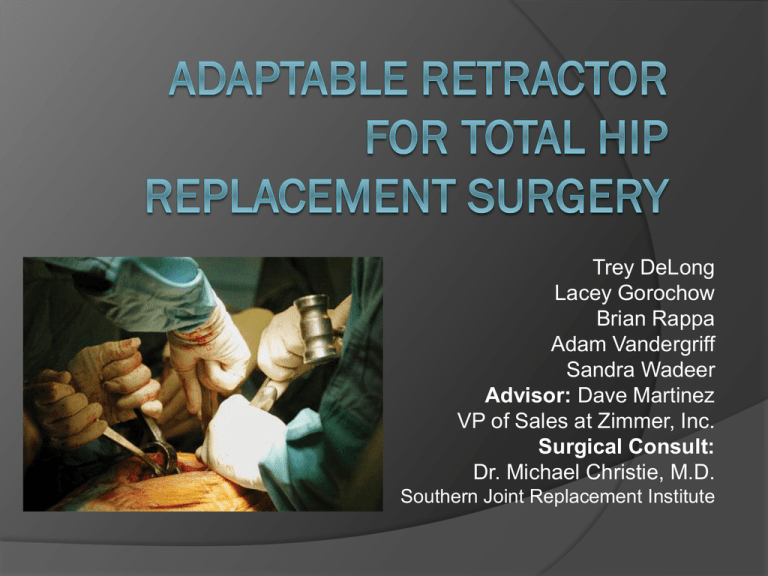
Trey DeLong Lacey Gorochow Brian Rappa Adam Vandergriff Sandra Wadeer Advisor: Dave Martinez VP of Sales at Zimmer, Inc. Surgical Consult: Dr. Michael Christie, M.D. Southern Joint Replacement Institute Problem Statement Current tissue retractors are narrow, multiple retractors are required especially in obese patients NY times reports 34% adults are obese +Surgical Techs($20.00/hr*2-4hr/surgery*200k surgeries/year) Time of surgery increases as well Previous team designed an adjustable retractor Complex and impractical for industrial production Prototype could not be used in surgery Mechanism & Consequences Mechanism causing the problem Physical properties of adipose tissue allow it to wrap around narrow retractors Consequences of unresolved problem Poor surgical field of vision Increase cost for additional materials and personnel Surgery Experience 4-5 in (6 in in bigger patient) 3 in wide Depth can range from 1-6 inches depending (Patient Size) Fat tissue getting in the way Dr. Christie’s Perspective Functions of retractor: Orient the incision Keep tissue from falling into surgical window Disposabile vs. Non Not “green” Strength concerns Ideal Device: Robust Simple Movable window Design Requirements & Objectives Keep back adipose tissue Fit multiple patient sizes and provide a clear view of the surgical site Must be cost efficient Simple manufacturing cheap material Ready for use in surgery Easily attached Easily sterilized Strong enough to hold back fat tissue Design • Lofted feature-rounded to keep back tissue • Curvature based on angle of known measurements in surgery video Material of Attachment Piece 17-4 Precipitation Hardening Stainless Steel Composition: 15.5% Chromium, 4.5% Nickel, 3.5%Copper Ultimate Tensile Strength: 1000-1340 Mpa High strength maintained up to 600°F Corrosion resistance superior Readily welded-preheating not usually required Stainless Steel Model Weld rods onto existing retractor to provide rails Attachment made in machine shop using CAD design Goals Reduce total hip replacement surgery cost Less personnel in the operating room Less retractors needed for surgery Increase vision and work room for the surgeon Increase efficiency of the surgery Reduce surgery time Performance Metrics Retractor system work on 95% of patients Different size attachments for non- disposable. Costs Keep production costs minimal ○ Mass production ○ Readily machined Predicted to be ~$300 for retractor and attachments (non-disposable) System and Environment Role in surgery Increase view of region and allows access Why its beneficial to the surgeon Reduce people near patient Reduce number of retractors Make surgery easier Testing Methods Verification and Validation Hardware Testing Stress Testing Sterilization Testing Verification and Validation Verification: ensuring that all of the parts of the device work together Obtained a model made of ABS plastic made from an FDM process Validation: making sure that the device satisfies specified requirement Taking the actual prototype into surgery for Dr. Christie to use Hardware Testing Protocol Use of mechanical equipment to test strength of device Take retractor with similar properties to testing labs Apply a load using a compression/ tensile machine to the device Hold the load over the device for several minutes Observe the deformation of the device over time Mechanically test ability of steel to get the properties Stress Testing Protocol Computer Modeling Use PDE Toolbox (MATLAB) to analyze tissue Obtain force load on the retractor from tissue data Model stress on the retractor using force loads Analyze model during normal use Sterilization Testing Use in surgery Run through Autoclave to test resilience and observe any remaining tissue Run through multiple cycles and observe the number of cycles until completely clean. Next Steps… Obtain a completed prototype to be shown in the final presentation Conduct testing methods Verification Validation Hardware Testing Stress Testing Sterilization Testing Present our final project References http://www.bls.gov/bls/blswage.htm http://www.innomed.net/hip_rets_mis.htm# Anchor-APC-49575 http://www.nytimes.com/2010/01/14/health/ 14obese.html http://www.orthosupersite.com/view.aspx?ri d=1889 http://www.zimmer.com/z/ctl/op/global/actio n/1/id/8140/template/PC/navid/10427




